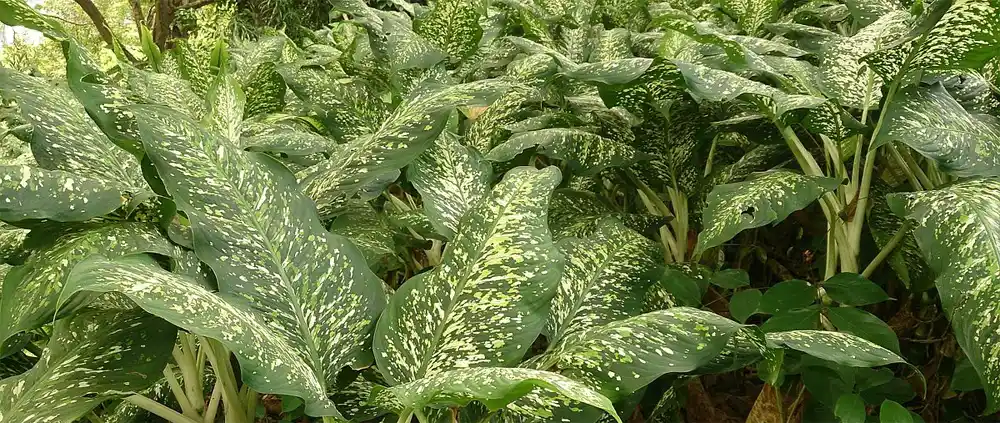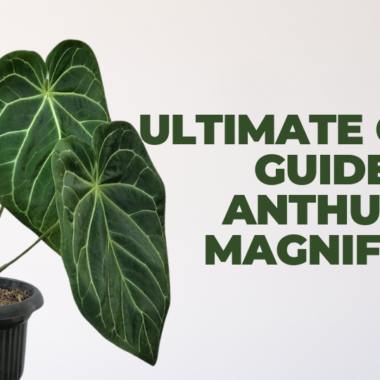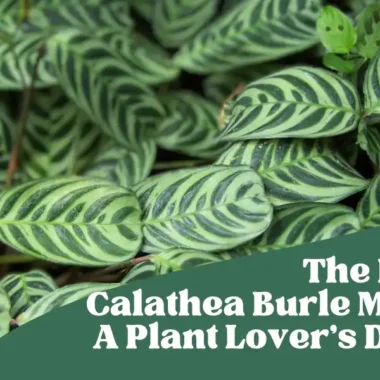Dieffenbachia, also known as dumb cane, is a popular houseplant that is easy to care for and can thrive in a variety of conditions. It is a tropical plant native to Central and South America and is known for its large, glossy leaves and its ability to tolerate low light. Dieffenbachia is a great choice for those looking for a low-maintenance houseplant that can add a touch of greenery to any room. In this article, we will discuss how to keep your Dieffenbachia plant thriving and provide some tips and tricks for keeping it healthy.
Watering
Dieffenbachia plants need to be watered regularly, but not too often. The soil should be kept moist but not soggy. It is best to water your Dieffenbachia when the top inch of soil is dry. You can check this by sticking your finger into the soil. If it feels dry, it is time to water. It is important to avoid overwatering, as this can lead to root rot. If you are unsure how much water to give your Dieffenbachia, it is best to err on the side of caution and give it less water than more.
Light
Dieffenbachia plants prefer bright, indirect light. They can tolerate low light, but they will not thrive in dark, shady spots. If you are unsure how much light your Dieffenbachia is getting, you can use a light meter to measure the amount of light in the area. If the light is too low, you can move the plant to a brighter spot or use a grow light to supplement the natural light.
Temperature
Dieffenbachia plants prefer warm temperatures between 65-80°F (18-27°C). They can tolerate cooler temperatures, but they will not thrive in temperatures below 50°F (10°C). It is important to keep your Dieffenbachia away from drafts and cold windows.
Humidity
Dieffenbachia plants prefer high humidity levels. You can increase the humidity around your Dieffenbachia by misting the leaves regularly or placing a humidifier near the plant. You can also place the pot on a tray filled with pebbles and water to increase the humidity around the plant.
Fertilizer
Dieffenbachia plants do not need to be fertilized often. It is best to fertilize your Dieffenbachia once a month during the growing season (spring and summer). Use a balanced liquid fertilizer diluted to half strength and apply it to the soil. Avoid fertilizing during the winter months, as this can cause the plant to become stressed.
Pruning
Dieffenbachia plants do not need to be pruned often. If you notice that the leaves are becoming yellow or brown, you can trim them off with a pair of scissors. This will help to keep the plant looking healthy and encourage new growth.
Repotting
Dieffenbachia plants should be repotted every two to three years. When repotting, use a pot that is one size larger than the current pot and use a well-draining potting mix. It is important to avoid over-potting, as this can lead to root rot.
Pests
Dieffenbachia plants are susceptible to pests such as mealybugs, spider mites, and scale insects. If you notice any pests on your Dieffenbachia, you can treat them with an insecticidal soap or neem oil. It is important to treat the plant as soon as possible to prevent the pests from spreading.
FAQs
Q: How often should I water my Dieffenbachia plant?
A: You should water your Dieffenbachia plant when the top inch of soil is dry. It is best to err on the side of caution and give it less water than more.
Q: How much light does my Dieffenbachia need?
A: Dieffenbachia plants prefer bright, indirect light. They can tolerate low light, but they will not thrive in dark, shady spots.
Q: How often should I fertilize my Dieffenbachia plant?
A: You should fertilize your Dieffenbachia plant once a month during the growing season (spring and summer). Use a balanced liquid fertilizer diluted to half strength and apply it to the soil. Avoid fertilizing during the winter months, as this can cause the plant to become stressed.
Q: How often should I repot my Dieffenbachia plant?
A: You should repot your Dieffenbachia plant every two to three years. When repotting, use a pot that is one size larger than the current pot and use a well-draining potting mix. It is important to avoid over-potting, as this can lead to root rot.







